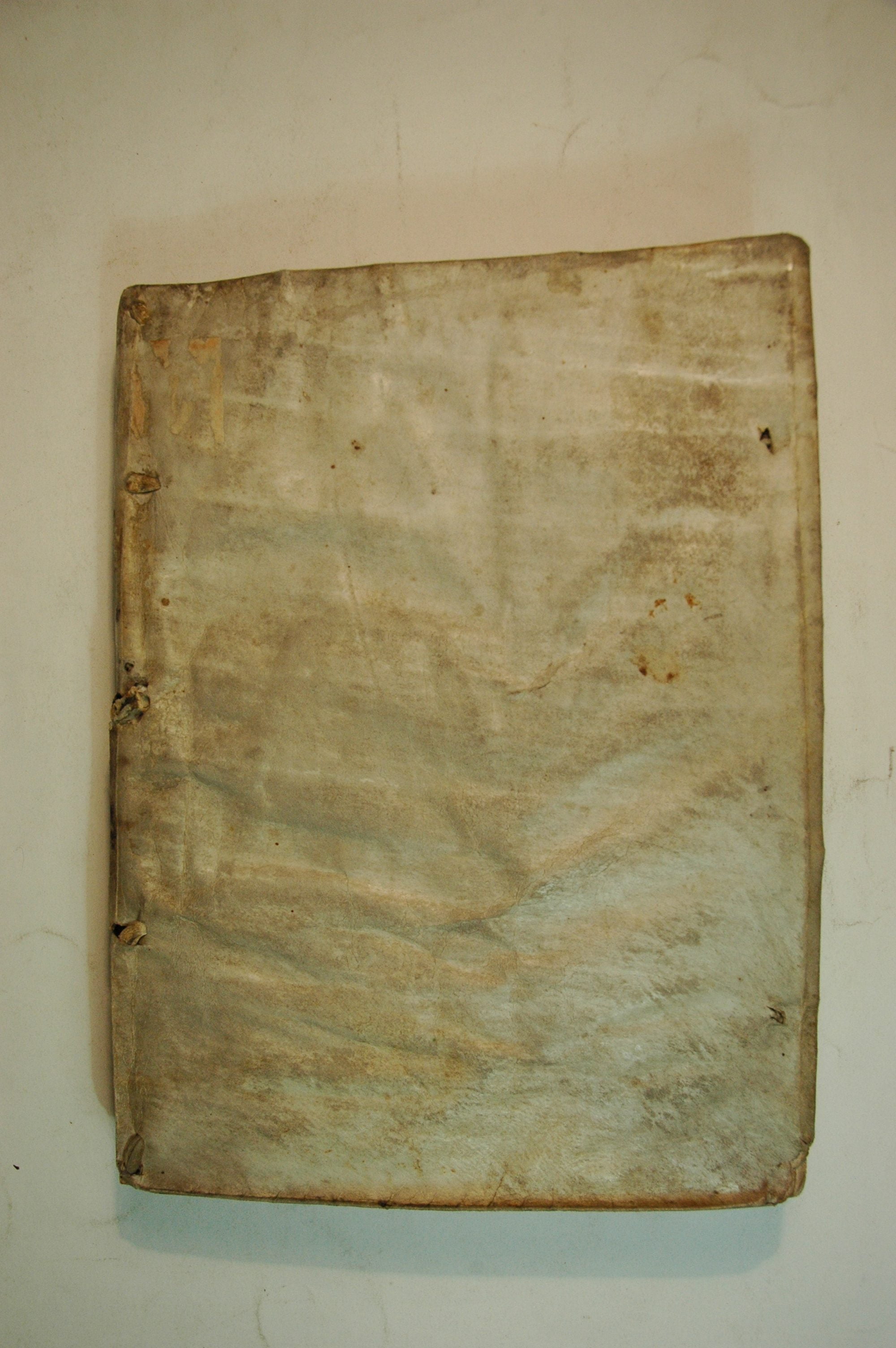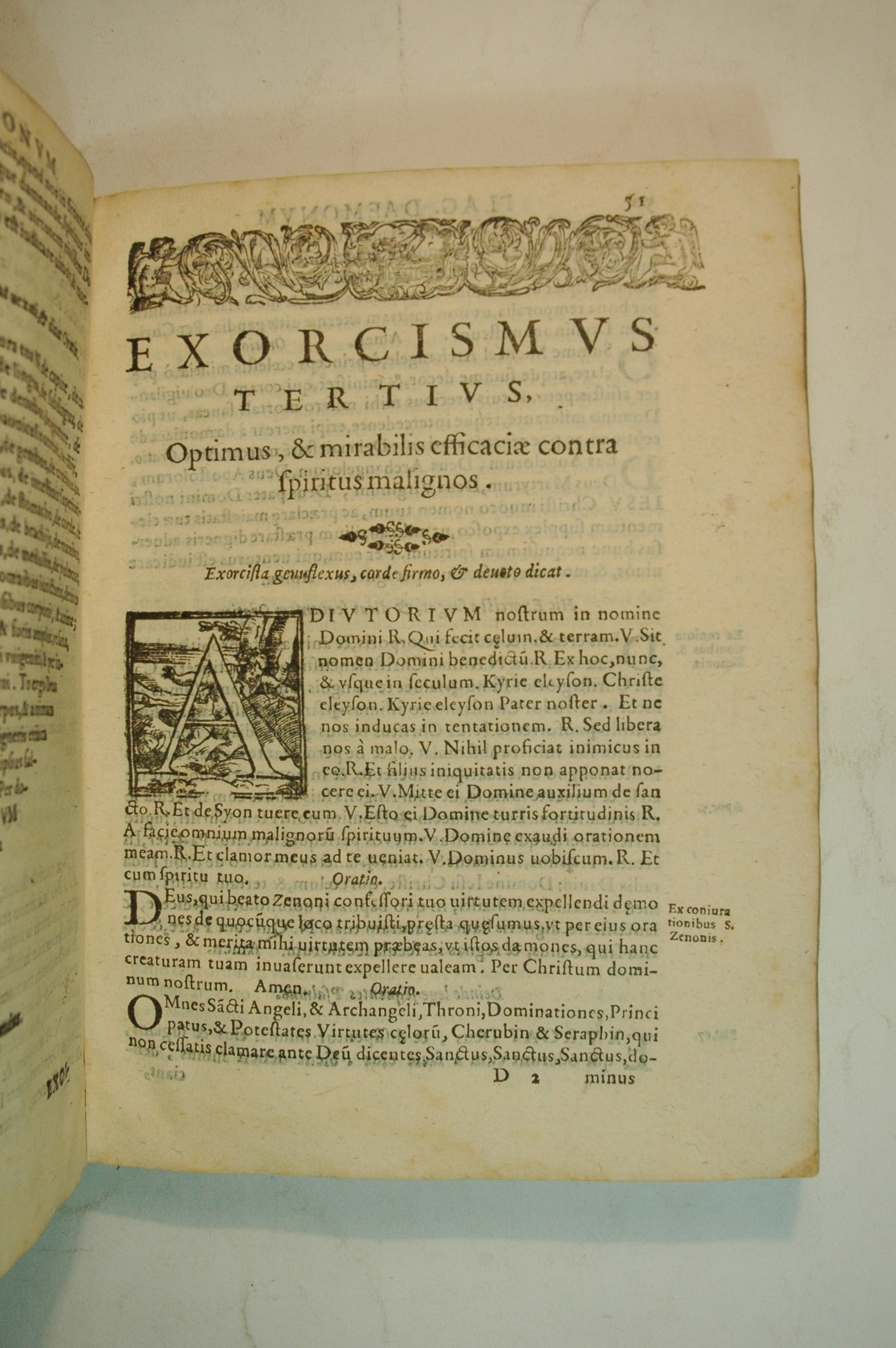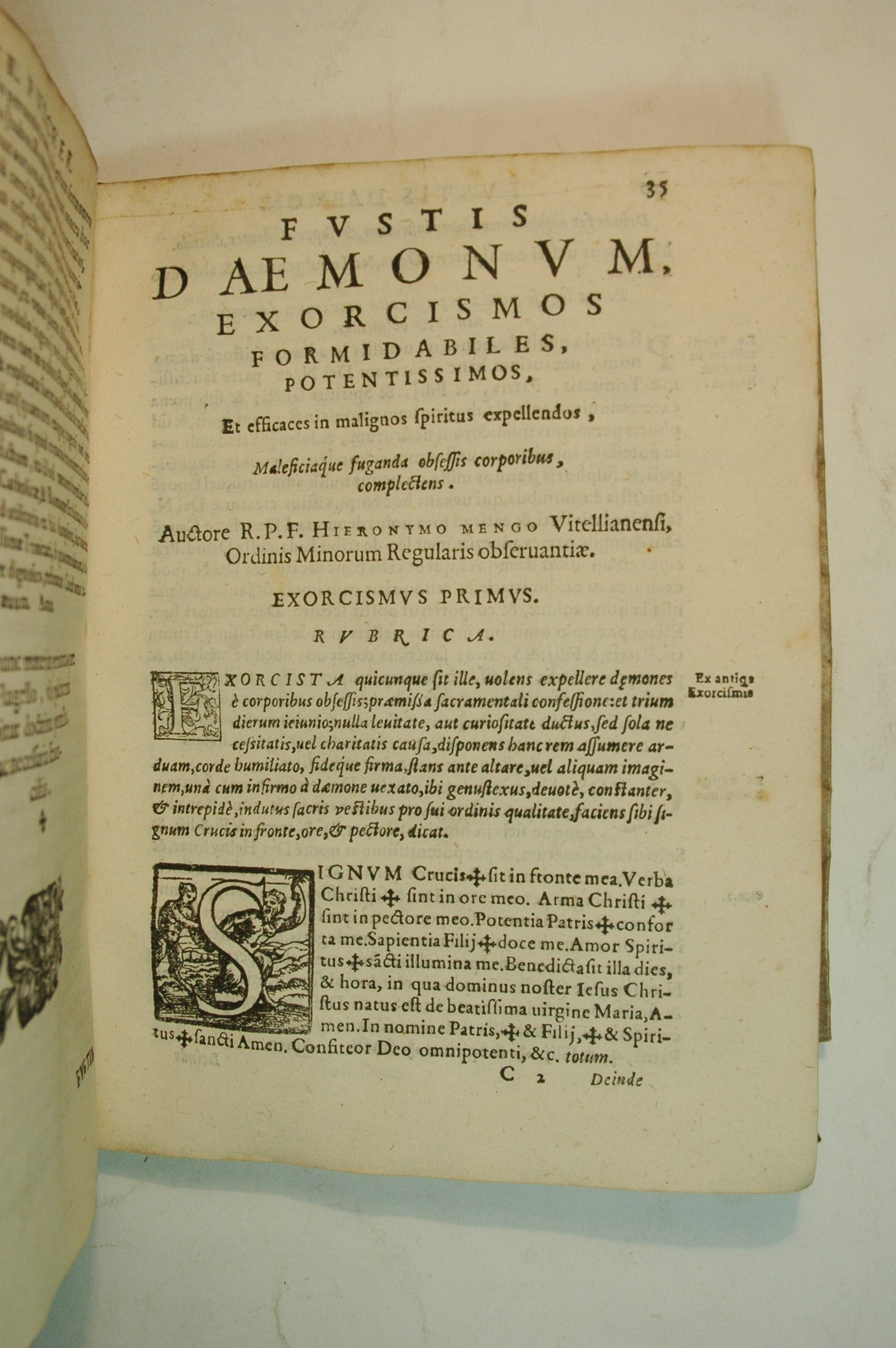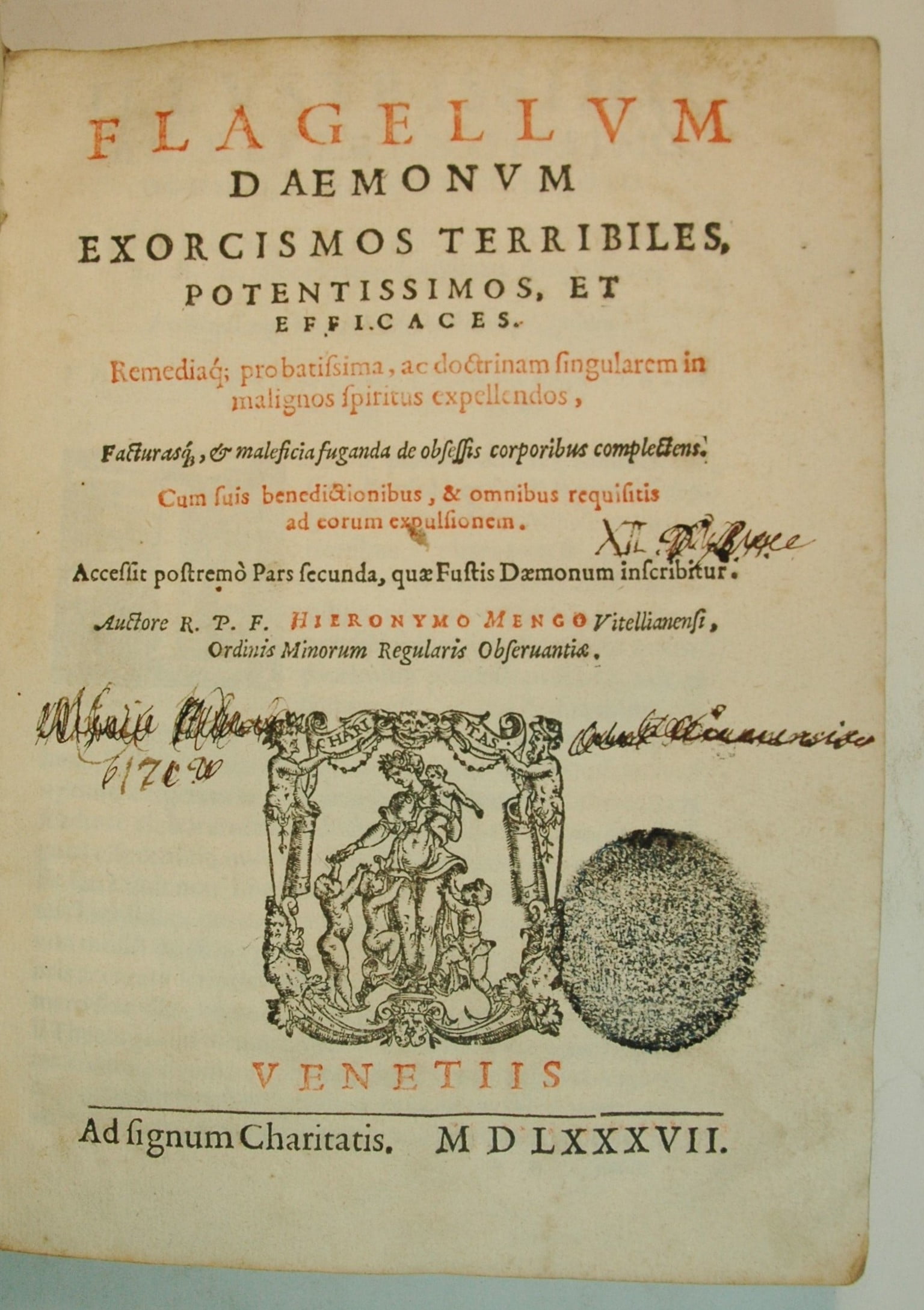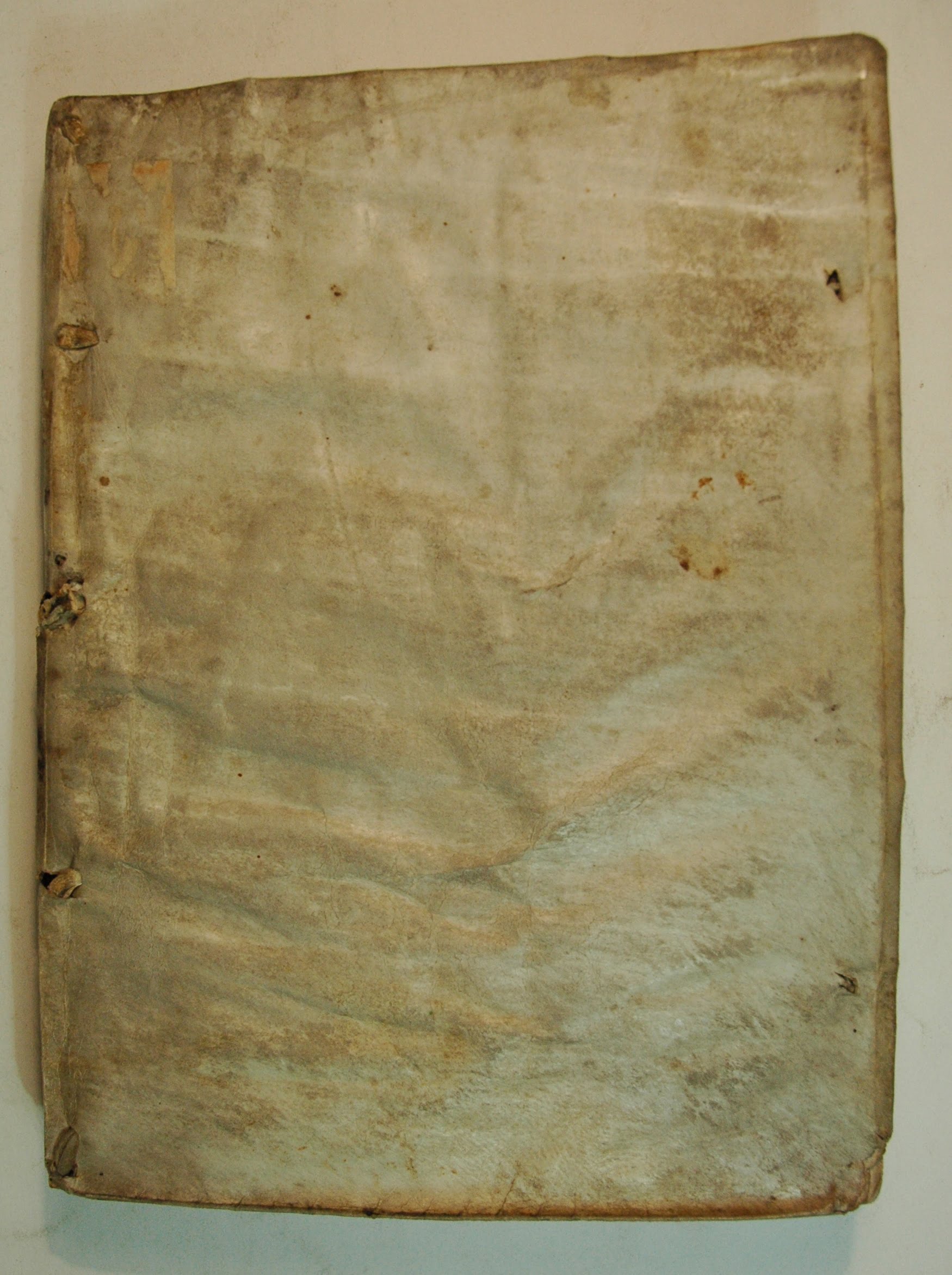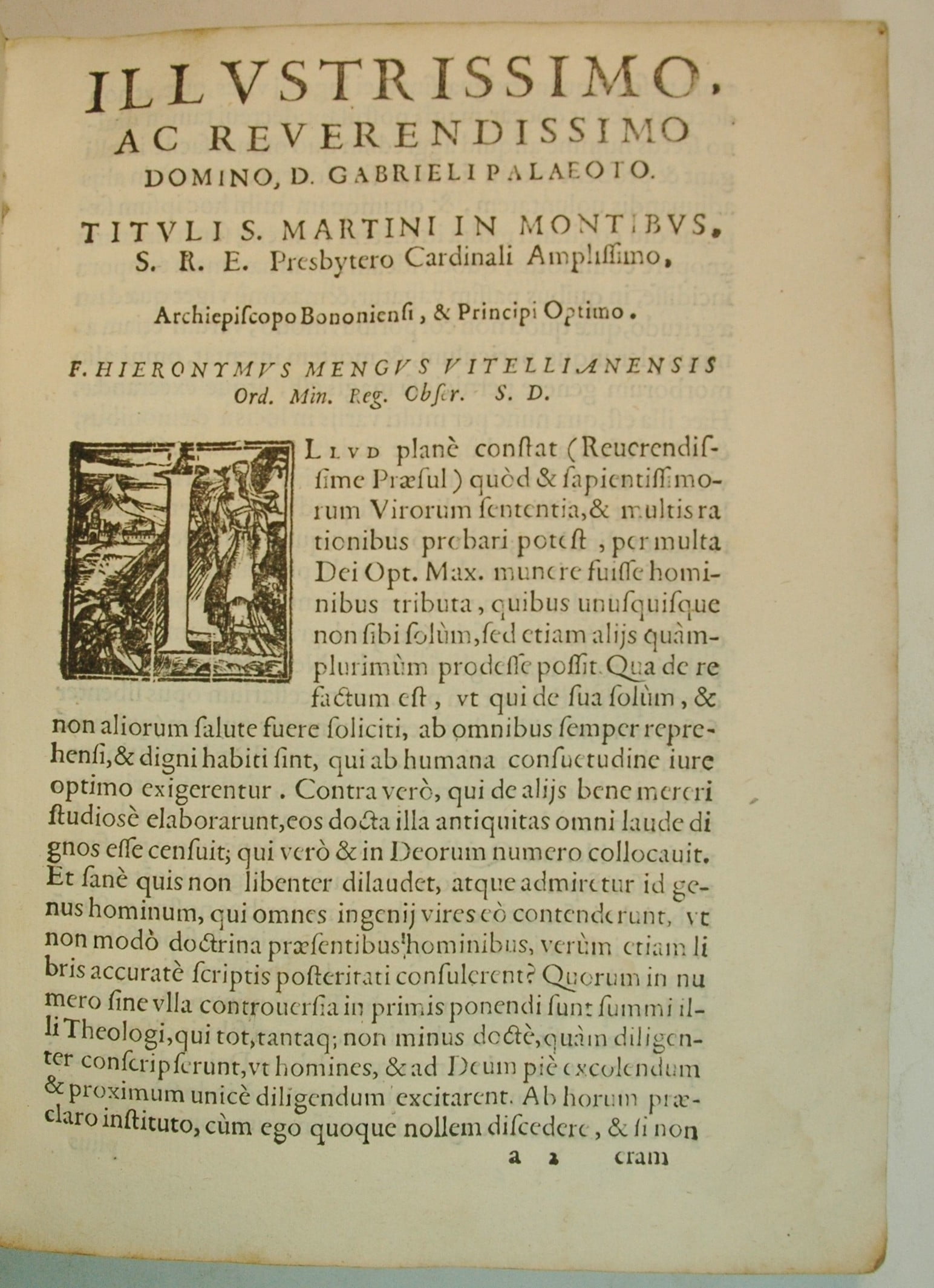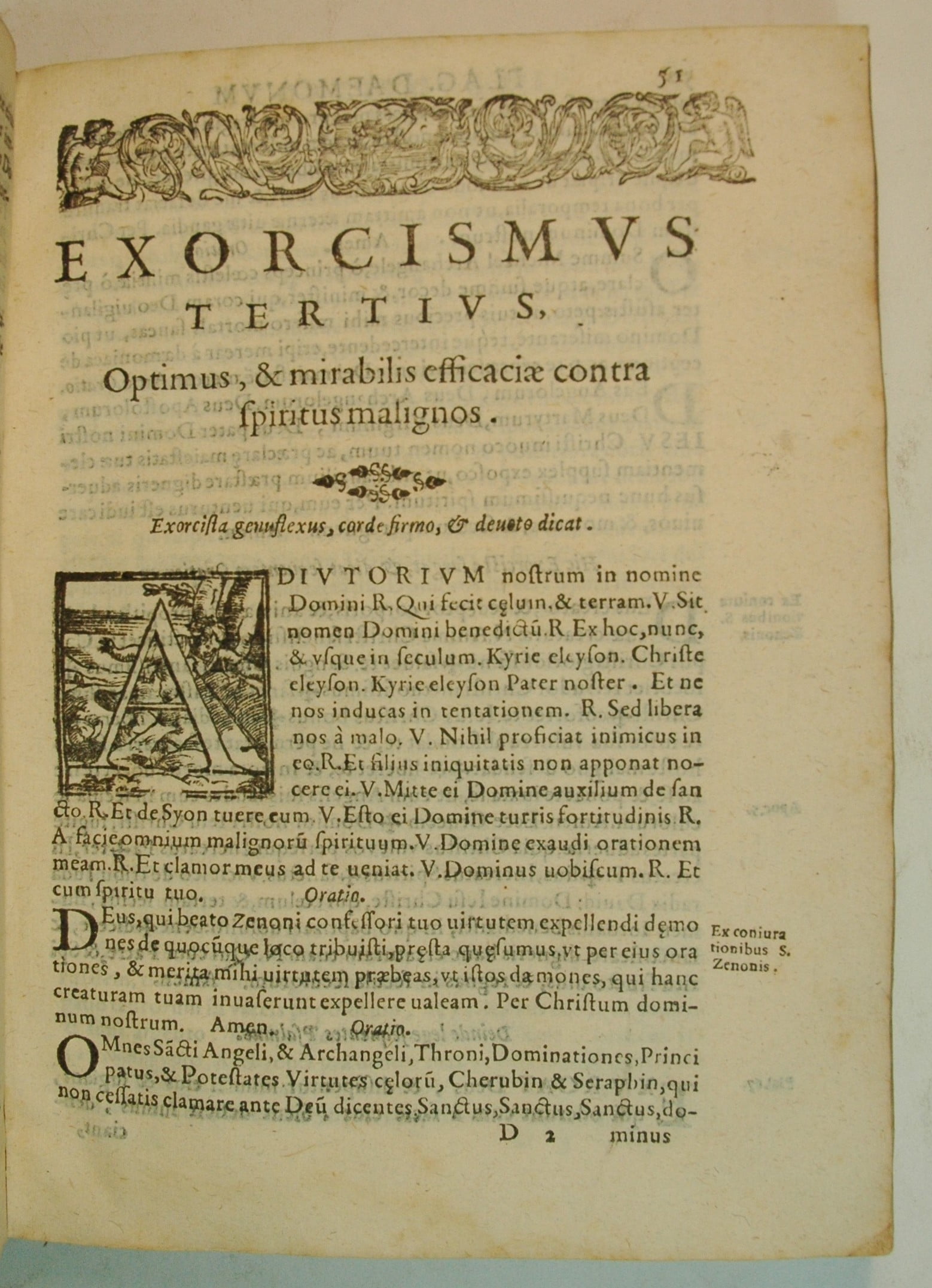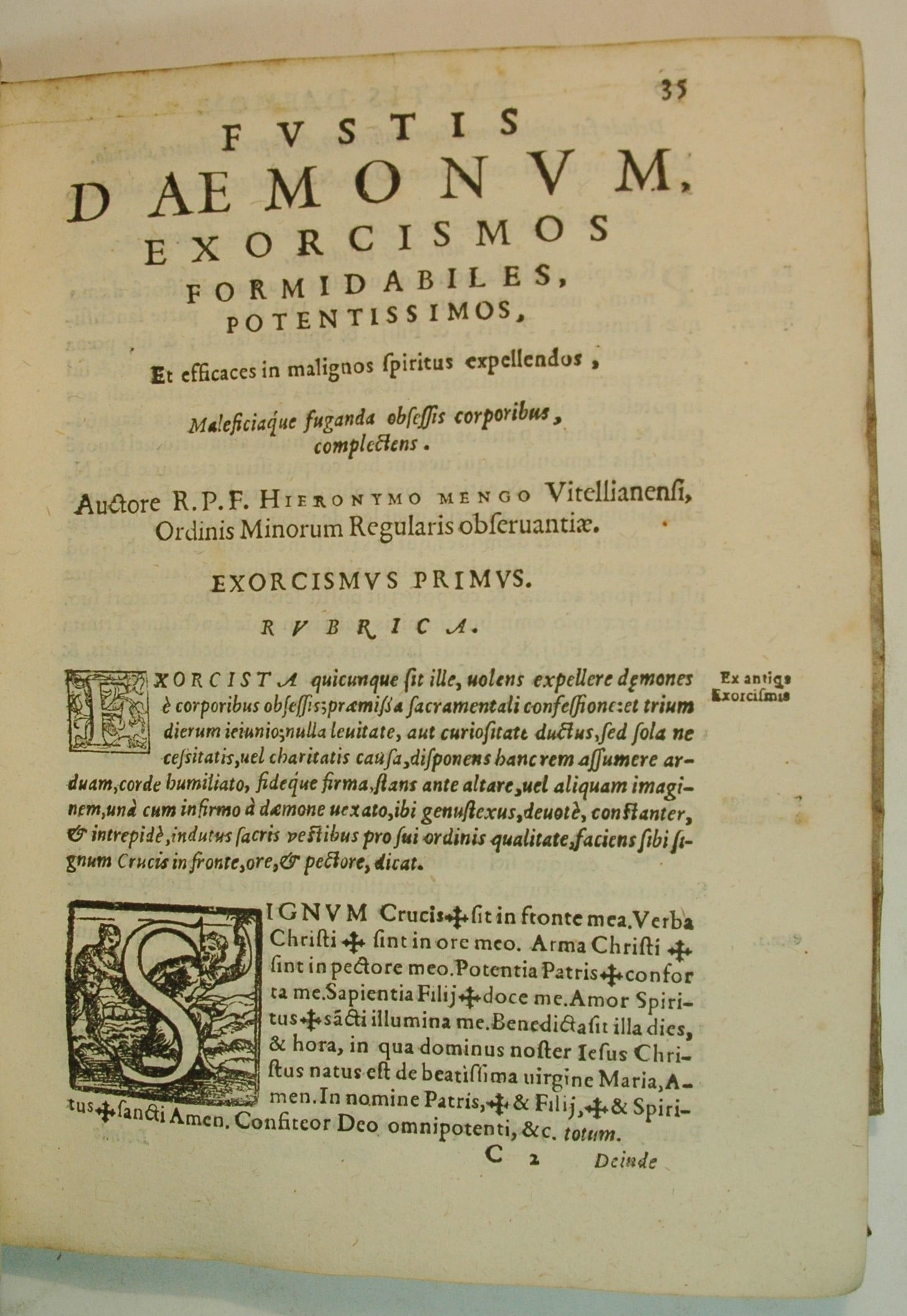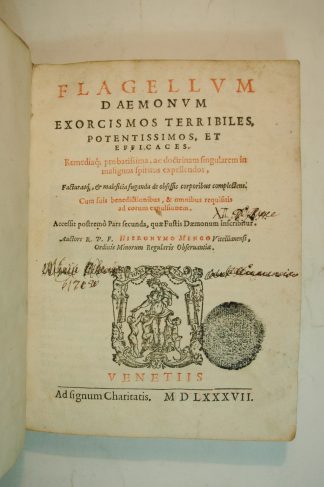MENGHI, Girolamo
Flagellum daemonum exorcismos terribiles, potentissimos, et efficaces... [with] Fustis daemonum, adiurationes formidabiles, potentissimas, et efficaces in malignos spiritus fugandos de oppressis corporibus humanis
Venice, ad signum Charitatis, 1587£4,950.00
4to (in eights). 2 vols. in one. pp. [xii], 172, [iv] ; pp. [xii], 160. (a , A-L . ; , A-K .). Roman letter. First title in red and black, woodcut printers device representing Charity on both titles, large historiated woodcut initials, woodcut ornaments, head and tailpieces, early ex-libris with shelf mark crossed out on blank portion of first t-p, library stamp (smudged) beneath. Light age yellowing. Very good copies, crisp and clean, in contemporary limp vellum, a little soiled and creased, remains of ties, early ink casemark on spine.
Excellent editions of two of the most important and influential works on exorcism of the sixteenth century by the most authoritative exorcist of Renaissance Italy, the Franciscan, Girolamo Menghi. Both these works were later included in the authoritative collection on exorcisms the ‘Thesaurus exorcismorum’. Menghi was born in Viadana in the province of Mantua. At the age of 20 he joined the Fransciscan order, rising to the level of provincial superior in 1598. A theologian and exorcist, he practised in Bologna, and was known as ‘the father of the exorcists’ art’. His best known work, ‘Flagellum Daemonum’ was translated into Italian and published in 1576, as ‘Compendio dell’arte essorcisica’ so it would reach the widest audience possible.
“Girolamo Menghi’s Flagellum Daemonum (the Devil’s Scourge), (was) originally published in Venice in 1576. This was a collection of seven rites of exorcism with detailed instructions on the preparation of the priest and the victim and what sorts of gestures or paraphernalia the priest should employ. No magic wands are mentioned, but the priest could make the Sign of the Cross with great frequency and drape the victim with his stole. He could use his book of exorcism, holy water, fire, or images of the devil. Various herbs or minerals burnt in smudges could help drive out the devil. Various sacramentals had to be specially blest – in essence, purified to make sure they had no diabolic residue – and there are rites of blessing given in this manual as well” Jane Davidson, ‘Early Modern Supernatural: The Dark Side of European Culture, 1400-1700.’
Girolamo Menghi prefaces the Flagellum with a vehement defence of exorcism. Dedicating the work to Cardian Gabriele Paleotto, Menghi advocates a much more aggressive promotion and publication of books of exorcisms. He states it is impossible to extirpate this plague unless the art of performing exorcisms is fully known and appreciated throughout the Catholic world.
“Worried about the perceived chaos that characterized exorcismal activities in Italy and the unorthodox practices employed by many exorcists, Menghi set himself the goal of compiling all of the existing authorized rituals into a manual for the use of parish exorcists. His books instruct exorcists on how to diagnose a genuine diabolic possession, how to confront the demons, and how to cast out evil spirits, and they contain numerous exorcismal liturgies. This concrete and practical approach was due partly to the events of the recent past. A certain ‘aegritudo’, a mysterious and deadly infection, was threatening innumerable victims, Menghi stated… [he] also intended to prove that demons possessed human beings and animals, and .. argued that ‘medicina celeste,’ as it was practised by ecclesiastical exorcists, was the only appropriate means to overcome diabolic power” Moshe Sluhovsky. Menghi was well acquainted with demoniacal literature; the authors he quotes range from Avicenna to Michael Psellus, from Lull to Sprenger. Despite his contemporary fame his works were placed on the index of forbidden books by the Sant’Uffizio in the C18th. “Girolamo Menghi articulated a philosophy of evil that reflected the social and religious culture of his time. …. He tried to arrange devils according to their function, spheres of action and bad habits – just as Pseudo-Dionysius the Areopagite had arranged angels in his ‘Celestial Hierarchy’”. Gaetano Paxia. Very good copies of these rare and influential works.
BM STC IT C16th. p. 434. Caillet 7378. “Curieux recueils d’exorcismes tardivement mis a l’index en 1709.” Thorndike VI pp. 555-8.In stock



